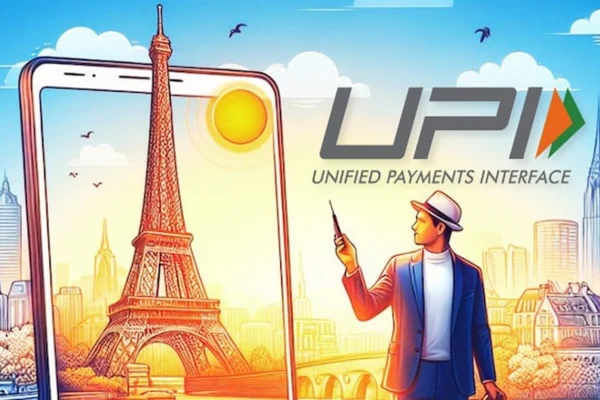Launch of UPI at Eiffel Tower marks India’s significant stride towards global financial integration.
How will UPI at Eiffel Tower work?
- National Payments Corporation of India (NPCI) International Payments (NIPL) collaborates with French e-commerce and proximity payments company Lyra to introduce UPI payments in France.
- Eiffel Tower is the first merchant to offer UPI payments in France.
- Indian tourists visiting the Eiffel Tower can initiate UPI payments by scanning a QR code generated on the merchant’s website.
How will it benefit Eiffel Tower?
- Tourists, especially Indian visitors who make up the second-largest group at the Eiffel Tower, can now use UPI for purchasing tickets online, facilitating seamless financial transactions.
What is Unified Payments Interface (UPI)?
- UPI is an Indian instant payment system developed by the National Payments Corporation of India (NPCI) in 2016.
- It consolidates multiple bank accounts into a single mobile app, facilitating seamless fund routing and merchant payments.
- It provides cash-less layer to India Stack.
What is India Stack?
- The India Stack is a project that aims to create a unified software platform to bring India’s population into the digital age.
- It is a set of open APIs and digital public goods that aim to unlock the economic primitives of identity, data, and payments at population scale.
- APIs, or Application Programming Interfaces, are a set of defined rules that facilitate communication between different applications.
Technology layers of India Stack:
- Presenceless layer: Where a universal biometric digital identity allows people to participate in any service from anywhere in the country.
- Paperless layer: Where digital records move with an individual’s digital identity, eliminating the need for massive amount of paper collection and storage.
- Cashless layer: Where a single interface to all the country’s bank accounts and wallets to democratize payments.
- Consent layer: Which allows data to move freely and securely to democratize the market for data.
Internationalization of India Stack:
- India has been working towards the internationalization of India Stack to promote collaboration in Digital Public Infrastructure (DPI).
Significance of Internationalization of India Stack:
- Global Collaboration: Enables collaboration in the digital space, fostering shared standards and technological advancements.
- Cross-Border Services: Facilitates streamlined international transactions, identity verification, and digital service delivery.
- Economic Growth: Contributes to the economic growth of partner nations, promoting innovation and entrepreneurship.
- Diplomatic Relations: Strengthens diplomatic ties by fostering positive relationships through collaborative digital efforts.
- Global Digital Inclusion: Contributes to global digital inclusion efforts, helping bridge the digital divide.
- Innovation Exchange: Promotes the exchange of ideas and technologies, fostering innovation globally.
- Common Standards: Contributes to the development of common standards for digital infrastructure, ensuring interoperability.
Efforts at Internationalization of India Stack:
- NIPL: It is a subsidiary of the National Payments Corporation of India (NPCI).
- It is focused on transforming payments across the globe with use of technology and innovation.
- UPI acceptance: The UPI is accepted in many overseas markets, including Singapore, Malaysia, UAE, France, BENELUX countries, Nepal, UK, Bhutan, Oman, Several Southeast Asian nations.
- India Stack adoption: India Stack is set to be adopted by several countries across different continents, including four Caribbean nations, Sierra Leone in Africa, Suriname in South America, Armenia in East Europe, and Papua New Guinea in Southeast Asia.
- India’s initiatives under G20:
- Establishment of a Global Digital Public Infrastructure Repository.
- Social Impact Fund to advance DPI in the Global South.
| UPSC IAS Preparation Resources | |
| Current Affairs Analysis | Topperspedia |
| GS Shots | Simply Explained |
| Daily Flash Cards | Daily Quiz |




